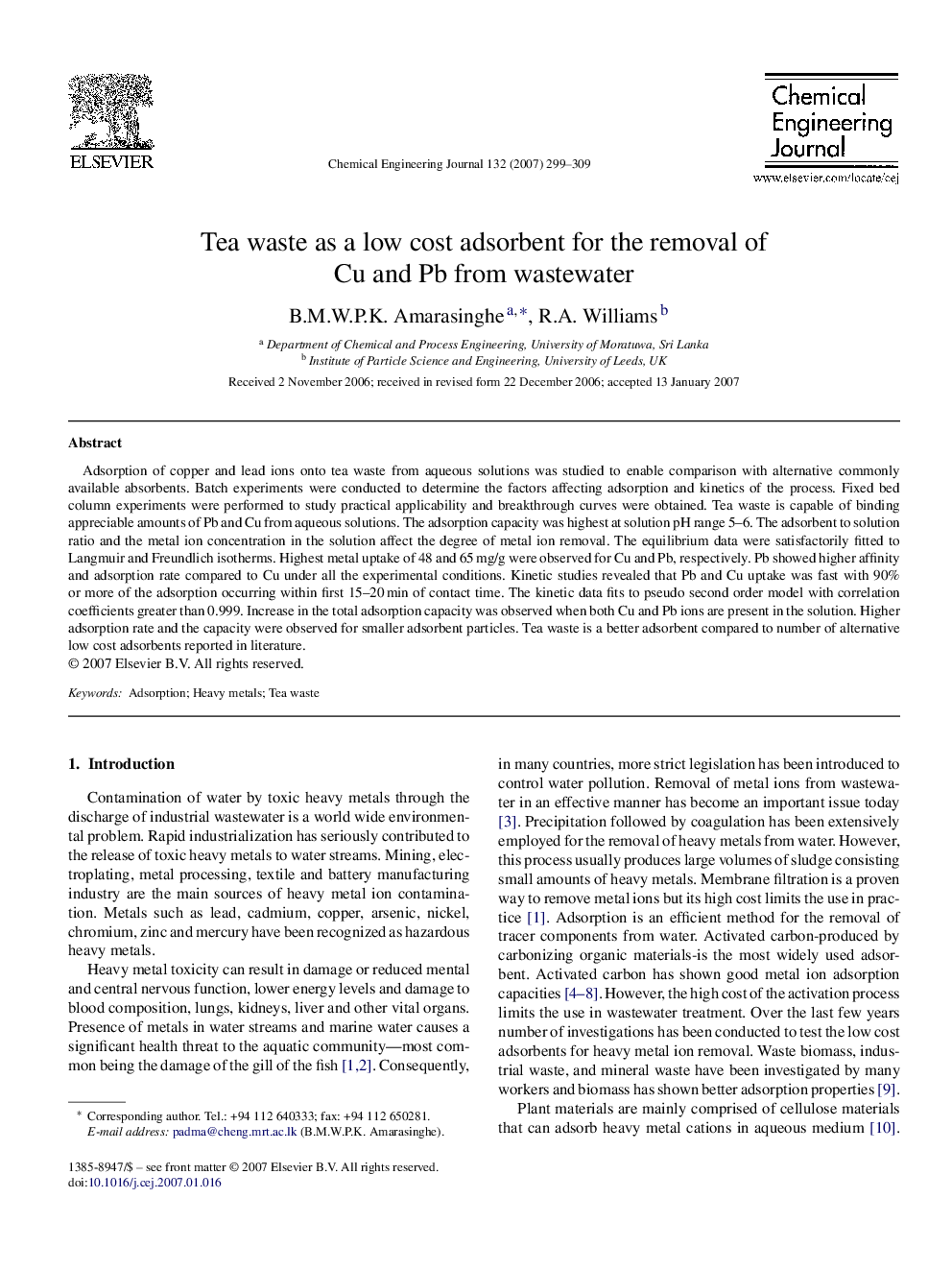| Article ID | Journal | Published Year | Pages | File Type |
|---|---|---|---|---|
| 153783 | Chemical Engineering Journal | 2007 | 11 Pages |
Adsorption of copper and lead ions onto tea waste from aqueous solutions was studied to enable comparison with alternative commonly available absorbents. Batch experiments were conducted to determine the factors affecting adsorption and kinetics of the process. Fixed bed column experiments were performed to study practical applicability and breakthrough curves were obtained. Tea waste is capable of binding appreciable amounts of Pb and Cu from aqueous solutions. The adsorption capacity was highest at solution pH range 5–6. The adsorbent to solution ratio and the metal ion concentration in the solution affect the degree of metal ion removal. The equilibrium data were satisfactorily fitted to Langmuir and Freundlich isotherms. Highest metal uptake of 48 and 65 mg/g were observed for Cu and Pb, respectively. Pb showed higher affinity and adsorption rate compared to Cu under all the experimental conditions. Kinetic studies revealed that Pb and Cu uptake was fast with 90% or more of the adsorption occurring within first 15–20 min of contact time. The kinetic data fits to pseudo second order model with correlation coefficients greater than 0.999. Increase in the total adsorption capacity was observed when both Cu and Pb ions are present in the solution. Higher adsorption rate and the capacity were observed for smaller adsorbent particles. Tea waste is a better adsorbent compared to number of alternative low cost adsorbents reported in literature.
